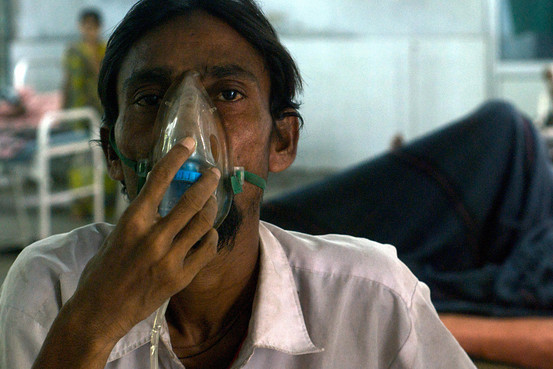 has been done.
has been done.
Confronting a slowing economy and a large budget deficit, India has significantly reduced its planned expenditure on fighting tuberculosis, the airborne disease that kills more adults here than any other infection and has become increasingly more drug resistant, a review of government plans and budgets shows.
Last year, a committee of Indian government and global health officials put together a national strategic plan to fight TB, which recommended India spend 65 billion rupees, or about $1.05 billion, in the five years starting from 2012. By early this year, the planned five-year expenditure was scaled down substantially to 45 billion rupees, or about $731 million according to the annual report of the Revised National Tuberculosis Control Program, India’s national TB control program.
Still, the planned TB budget represented a three-fold increase over the previous five-year spending of 15.88 billion rupees, or about $257 million.
India’s budget is a part of an overall funding problem for TB control worldwide. A recent report showed that global spending on research into tuberculosis declined 4.6% in 2012, at a time of an epidemic of multidrug-resistant TB, which, authorities say, cannot be combatted without new tools. The 2014 U.S. budget proposes a 19% cut in the budget of the U.S. Agency for International Development, a major provider of technical TB assistance globally.
In India, in the fiscal year ending March, a review of budget documents shows that the country’s TB department spent about 20% less on TB than originally budgeted. The annual TB budget announced last year was 7.1 billion rupees, or $115 million, but the department ended up spending only $5.6 billion rupees, or about $91 million, in 2012-13, according to budget documents reviewed by the WSJ.
The Ministry of Health, which oversees the TB department, didn’t approve that money until 11 months of the financial year had passed and so the money couldn’t be spent that year, Dr. K.S. Sachdeva, a senior official with India’s TB department, said in an interview with India Real Time.
To be sure, this was more than the 3.48 billion rupees, or $56.5 million, spent in 2011-12, but it was nowhere near doubling of the expenditure that was originally budgeted.
In response to reports in January of 2012 of patients in Mumbai in whom virtually none of the commonly used TB drugs were effective, India’s health ministry and TB officials announced repeatedly that they were rushing to build the laboratories and buy the medicines necessary for India to be able to diagnose and treat the estimated 100,000 people with multidrug-resistant TB. India and the WHO have, since 2008, changed the way they estimate drug resistance and now say India has about 64,000 people with multidrug-resistant TB, although no nationwide survey has been done.
has been done.
India’s TB program aimed to treat 8.3 million TB patients from 2012-2017, which includes 120,000 patients with multidrug-resistant TB, according to the program’s annual report. For these patients, anti-TB drugs will cost 17.97 billion rupees, or $292 million, the report says. But the report says the budgeted amount for these medicines is only 14.37 billion rupees, or $233 million.
When asked about the potential shortfall, Dr. Sachdeva of India’s TB program, said the difference between the amount needed and the amount allocated was likely a printing error, and that he would investigate further.
Source: India Real Time